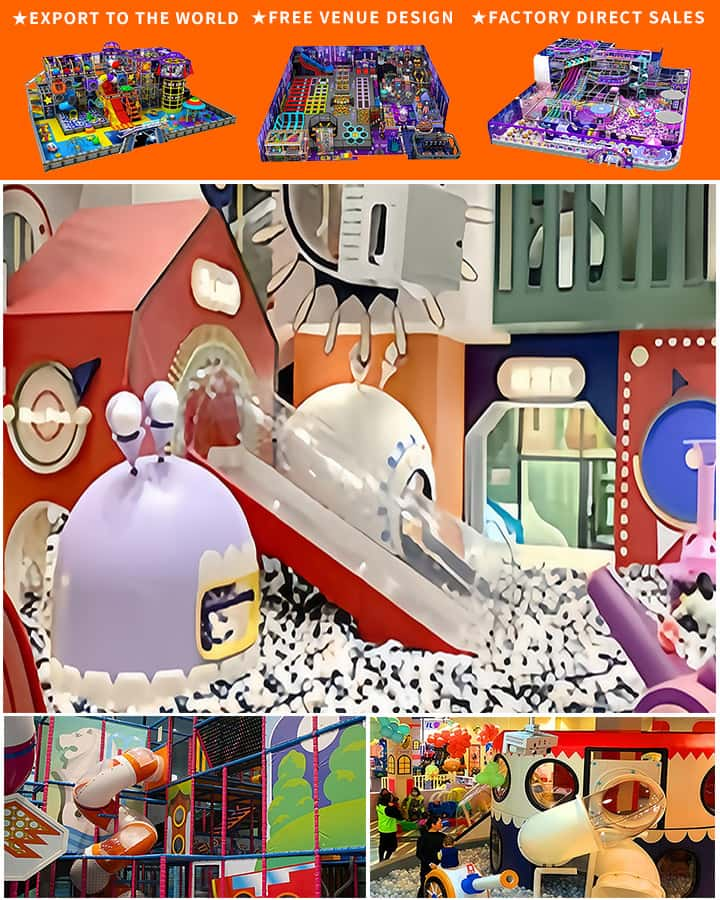In an era where screen time often overshadows physical play, indoor playgrounds have emerged as a beacon of joy and activity for kids. These vibrant havens not only provide a safe environment for children to play but also stimulate their creativity, physical fitness, and social skills. Let’s delve into why indoor playgrounds are becoming increasingly popular and how they contribute to children’s holistic development.
The Allure of Indoor Playgrounds
Indoor playgrounds are designed with imagination in mind. Unlike traditional outdoor parks, these facilities offer themed areas that can transport kids to different worlds—be it a pirate ship, jungle gym, or space station. This immersive experience captivates young minds and keeps them engaged for hours on end.
One of the primary attractions is the variety of activities available. From trampoline zones that defy gravity to soft play areas equipped with climbing frames, slides, and ball pits, there’s something for every child. These diverse options ensure that while one child enjoys soaring through the air, another can navigate obstacles or simply relax in a sensory area filled with colorful objects and textures.
Safety First

Safety is paramount in any setting meant for children, and indoor playgrounds are no exception. These facilities are built with safety standards that surpass those of typical playgrounds. Cushioned flooring reduces the risk of injury from falls, while padded walls and barriers around high-risk areas offer additional protection. Supervised play areas ensure that trained staff are always on hand to assist and intervene if needed, providing peace of mind for parents.
Health Benefits Beyond Fun
While indoor playgrounds are undoubtedly fun, they also promote physical health. Activities like running, jumping, and climbing help build strength, coordination, and balance. For younger children, these playgrounds encourage the development of gross motor skills essential for future sports and everyday movements. Moreover, the constant movement helps in burning off energy, contributing to healthy weight management.
But it’s not just physical benefits—indoor playgrounds foster social development as well. Interaction with peers encourages teamwork, sharing, and communication skills. Kids learn to navigate social cues and build friendships in a structured yet flexible environment. This social engagement is crucial for emotional intelligence and empathy, traits that are foundational for personal growth.
A Shelter in Inclement Weather
Perhaps one of the most significant advantages of indoor playgrounds is their weather independence. Rain or shine, snow or sleet, these playgrounds remain open year-round, offering a reliable option for active play regardless of external conditions. This reliability is especially beneficial during harsh winters or unbearably hot summers when outdoor play isn’t feasible.
Parental Involvement
Indoor playgrounds aren’t just for kids; they often include spaces for parents to relax and even participate. Many facilities feature designated parent-child areas where adults can join in the fun, strengthening bonds and creating cherished memories together. Others offer comfortable seating areas where parents can keep a watchful eye while taking a much-needed break.
Conclusion
Indoor playgrounds represent more than just a place to expend energy; they are a multifaceted tool for nurturing happy, healthy, and well-rounded individuals. By combining safety, physical activity, and social interaction within a controlled environment, they provide an invaluable resource for families seeking enriching experiences for their children. As we continue to prioritize the well-being of our youth, indoor playgrounds stand out as a shining example of where joy meets development in the most delightful ways. So, next time you’re looking for a fun-filled day, consider heading to an indoor playground—your kids will thank you for it!




